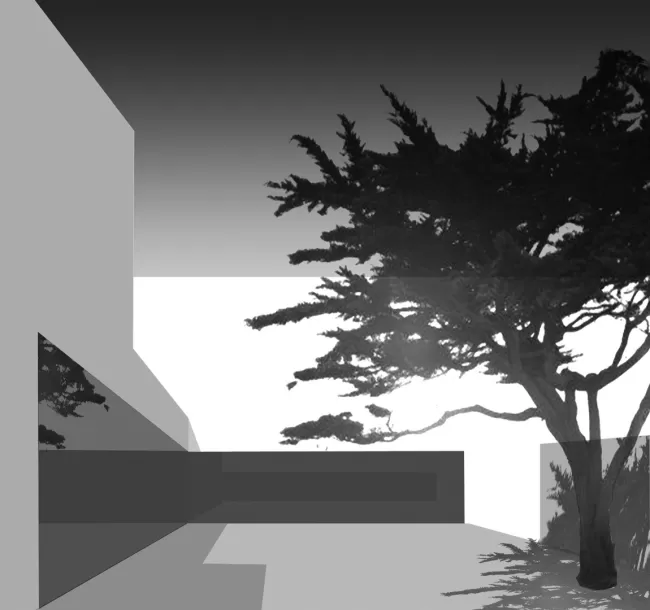Anti-Context
“I wanted to invent a reality that would be more real to an audience than their own sense of reality – the sky as the only threshold.”
Ken Adam1
Anti-context reflects the increasingly tortured condition of the present role of context. Suburban developments explicitly initiated the abandonment of any superior, contextual framework. Today, building in suburbia largely means protecting oneself from the context. The paradox is emphasized by an ongoing process of radical individualization and increasing legal disputes between neighbors. Their individual experiences in an intense global world spawn new daydreams, desires, and demands, that often wildly contradict the adjacent conditions and preclude truly contextual reflection.
The design of a house, the most fundamental architectural enterprise, provides evidence of the current ethical confusion. Establishing one’s own perception of dwelling often means struggling with its potential unacceptability within the neighborhood. The result is an astonishing accumulation of people without local interests. This increasingly hostile relationship is the purest form of anti-contextual behavior.
Cities in general are increasingly defined by importation and/or alienation of foreign programmatic content as it conflicts with the traditional context. Because of the intense competition to reinforce a “market” position, cities encourage a myriad of catalysts to inhibit resistance to expansion and to encourage renewal and territorial extension. This desired growth occurs within narrow timeframes and often under exceptional circumstances, as if city development today could run under a sort of “Chapter 11” against a forthcoming event, shielding itself from oppositional forces to the point of being freed from the requirement to prove profitability.

GSC House, Courtyard, 2005
In a country where political culture is based on bottom-up participation of citizens, an anti-contextual implementation of new scale and program profoundly contradicts standard procedure. Consequently, compared to a top-down system the degree of anti-contextual action is significantly reduced.
The Swiss resistance to grand-scale, and consequently alienated, urban enterprises presents a concept of urban development that contrasts the European version of territorial city expansion.
The Swiss city remains constant in size and maintains a critical urban substance. The resulting territorial freeze-frame is antithetical to the European phenomena and targets a highly compact city of unchanging scale that promotes a process of consolidation rather than a leap to further territorial growth.
The contrast of the two developing models is interesting to observe. The model of expansion promotes a better future through maximized urban redirection and newly gained urban territory. It is an heroically rendered enterprise, yet it is continuously pestered by negative synergies of growth such as traffic, crime, and inefficient ecological factors, and necessitates the establishment of standards. The increase in urban population underlines the will to increase power over other territories and to strengthen economic potential. Swiss cities are ignorant of territorial growth and expansion. At first glance, there is a lack of change and a lack of recognition of new qualities.
The imposed consistency becomes a declaration of quality. Here, extra-size would be anti-contextual within the national structure and any extra-power would become inefficient by nature.
Though the city itself has a population of 380,000, the metropolitan area of Zurich includes approximately 2.5 million people, a third of the Swiss population.
Examining the role of infrastructure clearly reveals contrasts with the typical European city, which primarily connects within the body of its own metropolitan territory and creates a situation where the attraction of living beyond the city territory decreases rapidly due to the lack of options.
The construction of the S-Bahn, Zurich’s hybrid of a train and a subway, hardly plays a role within the city but rather connects the outskirts and smaller cities beyond Zurich’s territory. The stations act as Trojan horses in remote suburbia, linking the large metropolitan territory of northeastern Switzerland to the very heart of Zurich and assuring that the city will remain small.